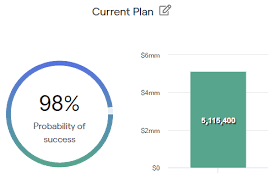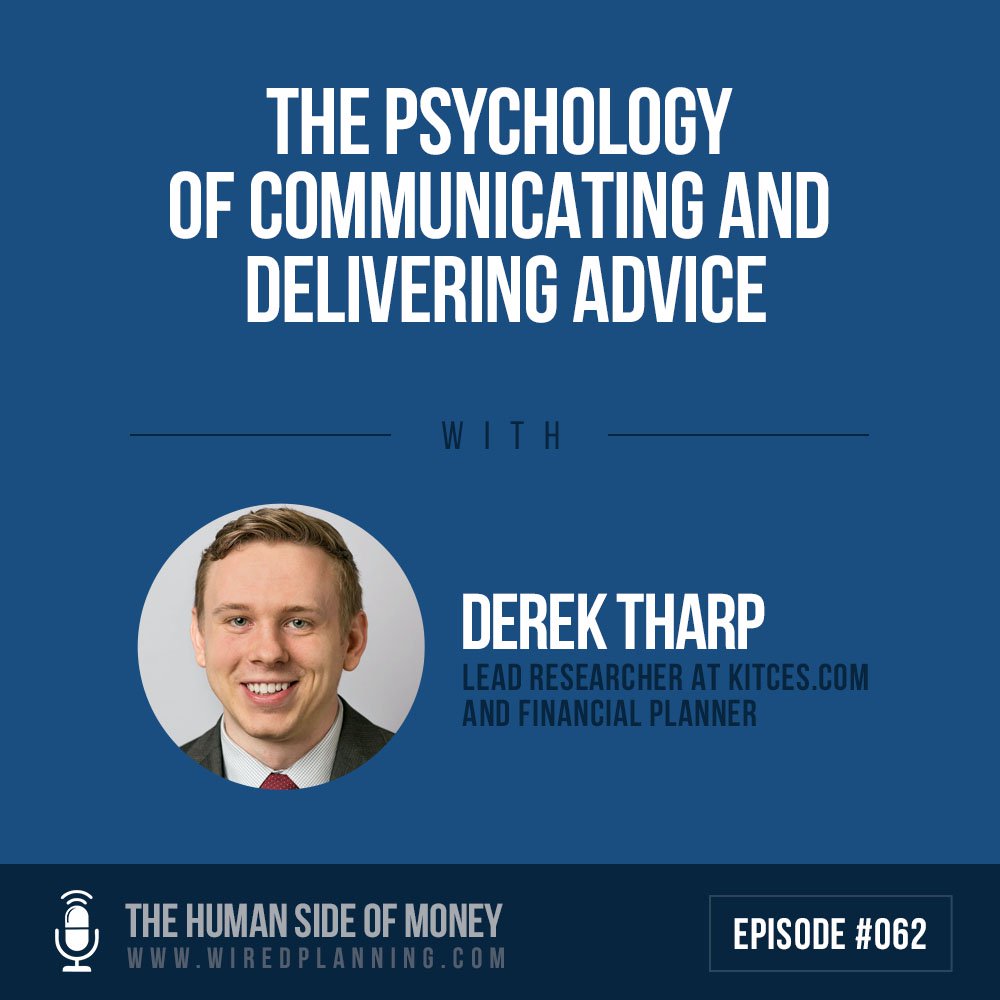Show Links
*If you want to be notified when the next episode packed full of practical tips and strategies to master the human side of money will be released, you can:
- Subscribe to the Show
- Join the community of like-minded advisors and planners across the world being notified via email. In addition to podcast releases, you’ll get our monthly “Wisdom Round Up” where we deliver to you the best content from around the industry on applying behavioral finance and mastering the human side of money.
*The featured partner for this episode is a must-have tool for helping clients follow-through and implement advice. After all, the best advice is useless in the absence of execution. Rather than stressing about follow up calls and emails, Knudge provides a built-in system designed to improve follow-through.
Episode Summary
Let’s assume for a second that we live in a purely rational world.
The only thing that should matter for a prospective client evaluating your services is the quality of your advice.
And the only thing you should have to do with clients is show them numbers, make recommendations, and expect them to follow through with clarity and confidence.
But, we don’t live in a purely rational world.
We live in a world where our decisions and perceptions are often subconsciously driven by invisible influences.
For example, you can’t simply tell a prospective client that you’re trustworthy and credible.
So, in order to determine that, they’re constantly evaluating things that might signal trust and credibility but have little to do with either.
Things like:
- How you dress
- The credentials/awards in your office
- How you communicate
- The car you drive
Should any of these things be considered indicators of trust and credibility?
No.
But are they?
Yes.
Or, think about when you go to present a retirement projection to a client that looks like this:

The client may not know how to interpret probabilities, or they might latch onto the 2% probability of “failure” rather than the 98% probability of success.
Should the way you communicate information to clients influence their decisions and behavior?
No.
But does it?
Yes.
Or, maybe you offer a free financial plan for prospective clients. Another planner does the same exact work but charges an upfront planning fee.
The difference between the two has a direct impact on how clients quantify the value of ongoing planning advice.
Should the way you charge up front influence the ongoing value of the service?
No.
But does it?
Yes.
Fortunately, Derek Tharp researches these topics and applies them in the work he does with clients. He’s going to share with us the information we need to better understand the psychology of communicating and delivering advice.
Things You’ll Learn
- The invisible influences that influence client and prospect decision-making
- What are prospective clients subconsciously assessing to determine trust and credibility
- How what you wear signals different things to different people
- The psychological barriers inherent within Monte Carlo and probability-of-success-driven planning software
- How to improve the way you communicate probability of success
- The “Guardrails” approach that leads to more confidence in retirement spending
- The “Mapquest” vs “GPS” approach in financial planning
- Should you offer a free initial financial plan
- How initial fees for planning impact the perceived value of ongoing planning
- How to offer test drives that convert prospects into life-long clients
About Derek Tharp, Ph.D, CFP®, CLU®, RICP®
Derek Tharp is the lead researcher at Kitces.com and an assistant professor of finance at the University of Southern Maine, and the founder of Conscious Capital, his RIA where he works with clients.
He also contributes to The Wall Street Journal, Journal of Financial Planning, Financial Planning Review, and Journal of Financial Counseling and Planning among others.
Other Episodes You’ll Like On The Psychology of Advice
- The Irrational And Invisible Influences That Drive Human Behavior with Rory Sutherland
- Enhancing Client Connection And Outcomes In Virtual Financial Planning Meetings with Dr. Sarah Asebedo
- An Evidence-Based Approach To Winning Prospects And Influencing Clients with Evan Beach
Resources
Certified Financial Planner D.J. Commercial
Optimal Interior Design Of A Financial Advisor’s Office
A Monte Carlo 50% Success Probability Can Work (Kitces.com – Derek Tharp)
Do Free Financial Plans Reduce The Value Of Ongoing Advice? (Kitces.com – Derek Tharp)
Managing The Theater Of A Financial Planning Meeting (Kitces.com – Derek Tharp)
Behavioral Investment Counseling by Nick Murray
Whenever you’re ready, there are 3 ways I can help you master the human side of advice:
- HSOA Masterclass: An 8-week group program on building trust & connection, aligning money and life, and delivering frictionless advice.
- The Ultimate Discovery Meeting: A proven framework to seamlessly convert prospects into life-long clients in one meeting.
- HSOA Community (COMING SOON!): An online space to meet, collaborate, discuss, brainstorm, learn and grow with other advisors passionate about the human side of advice
If you’re interested, let me know here.





